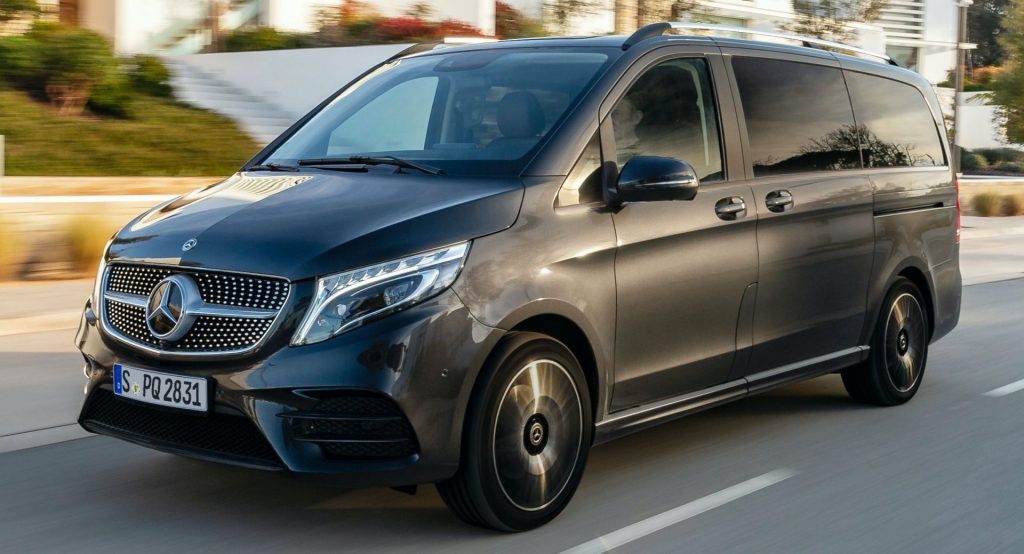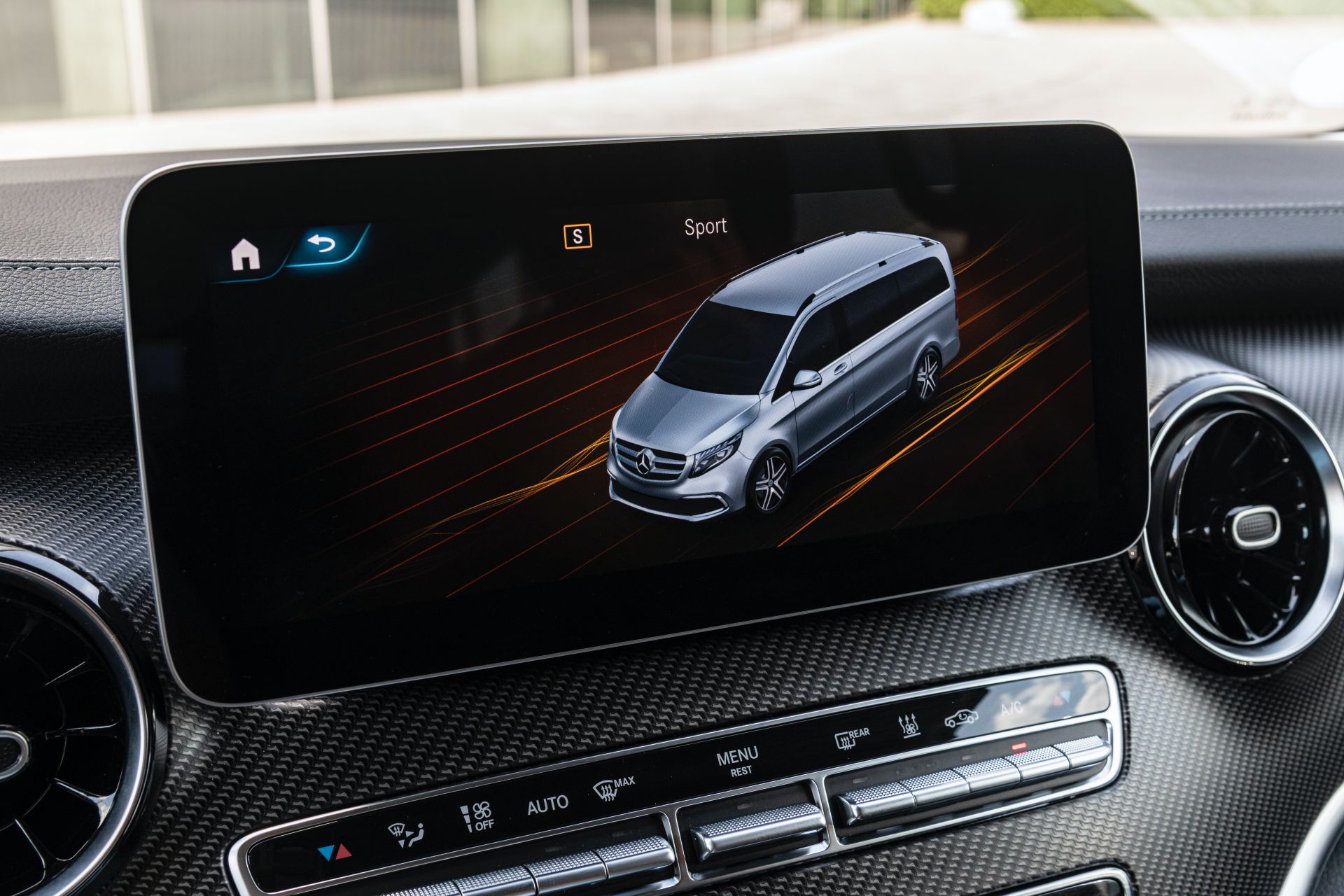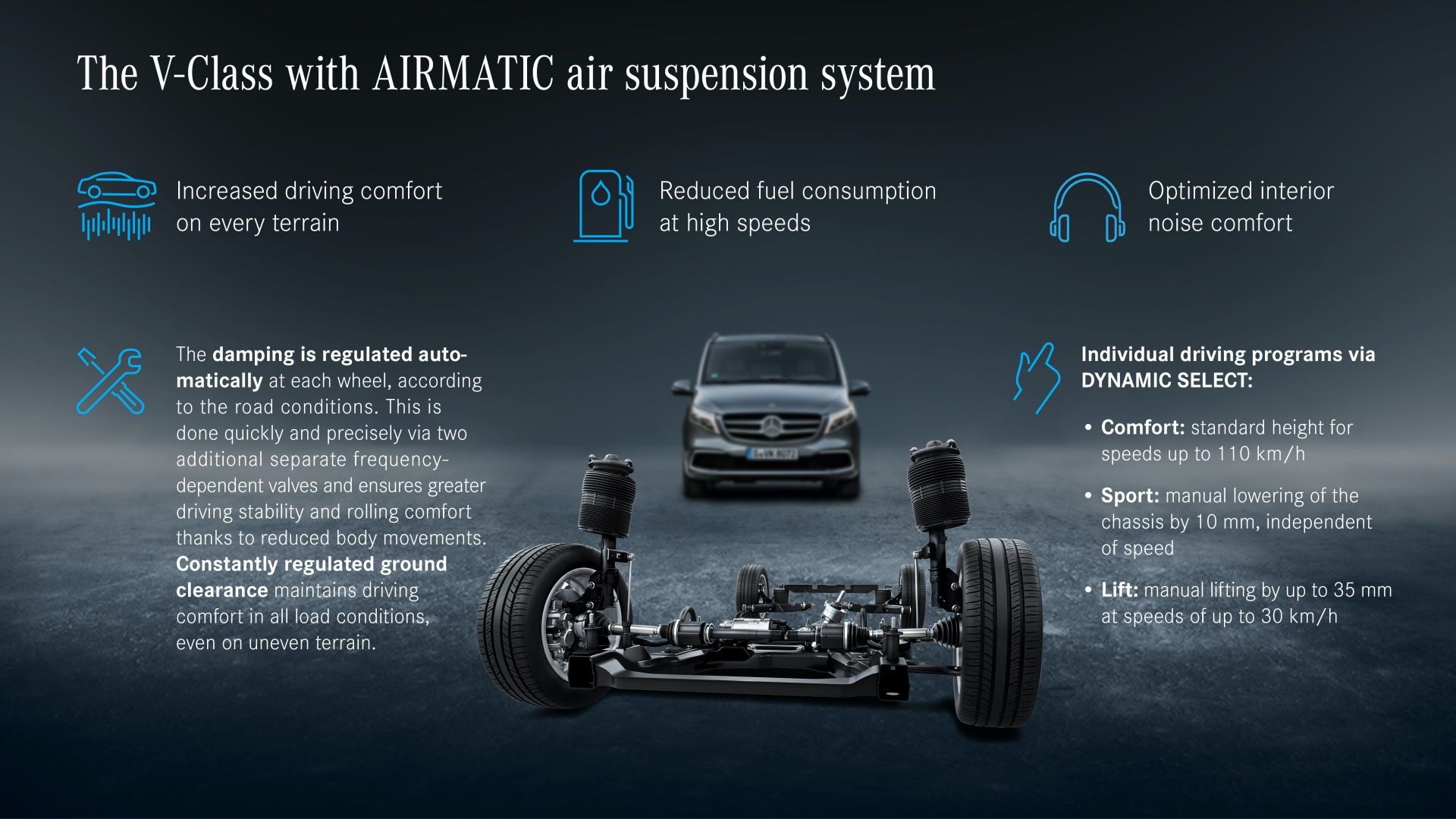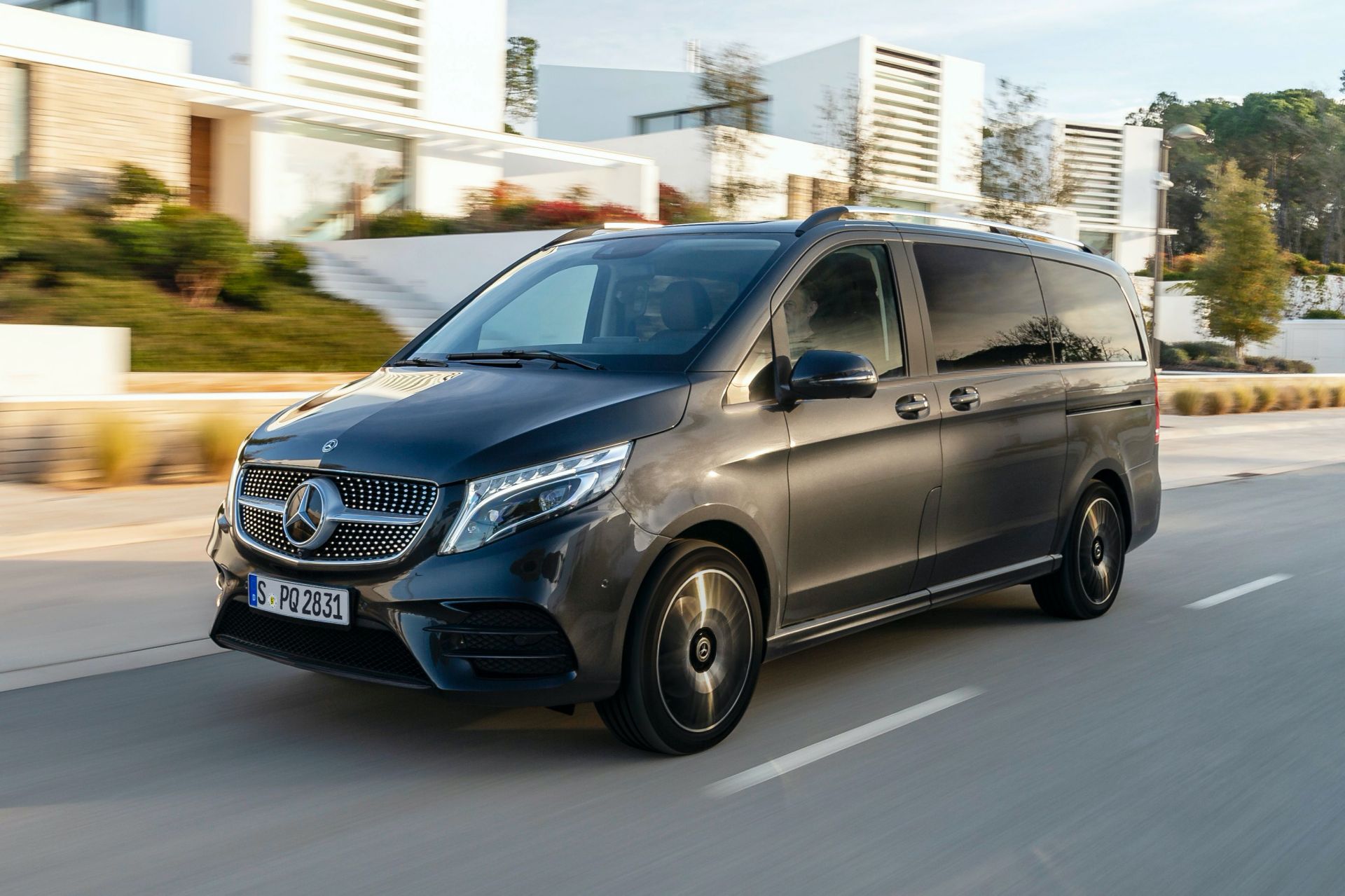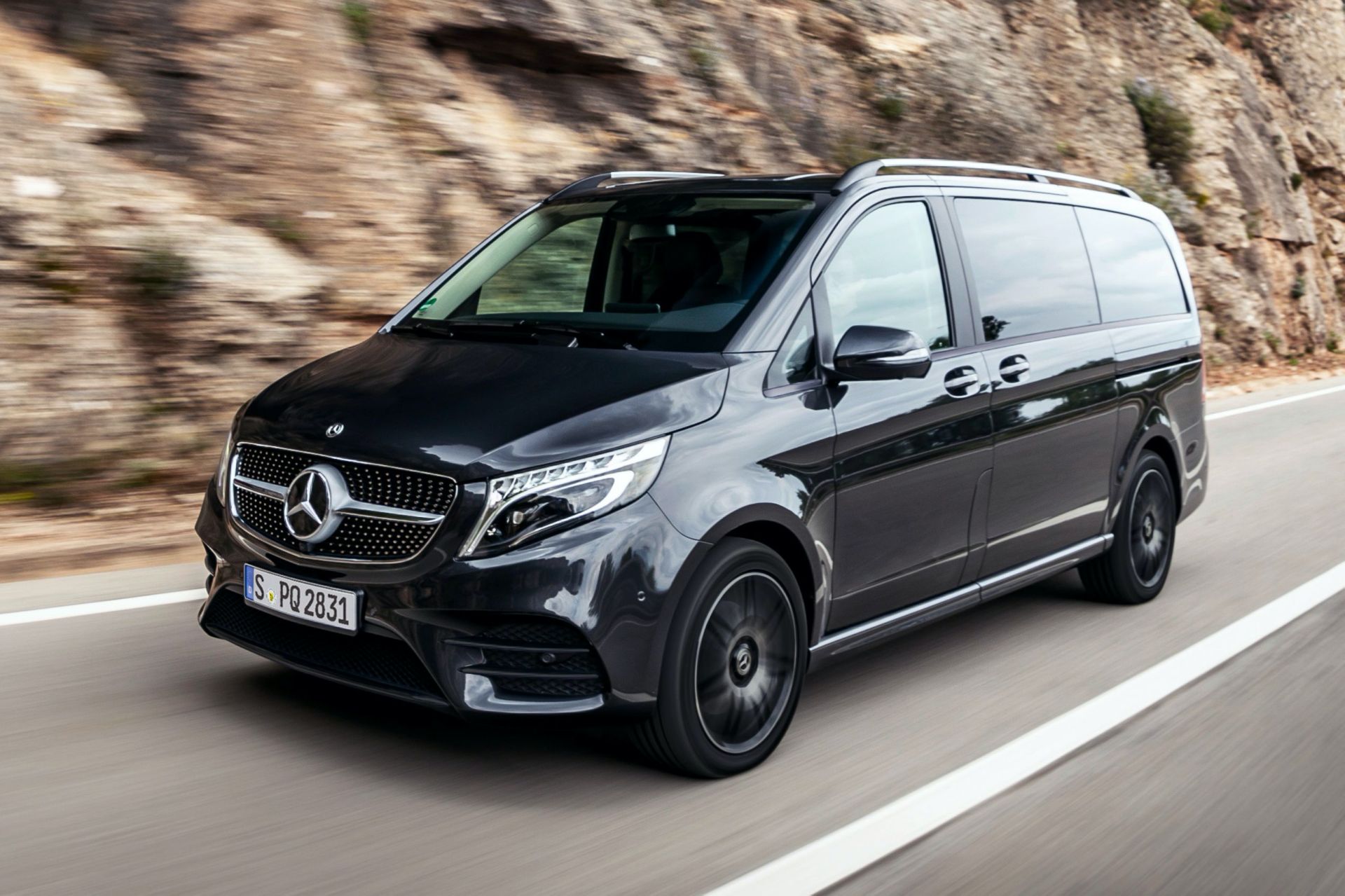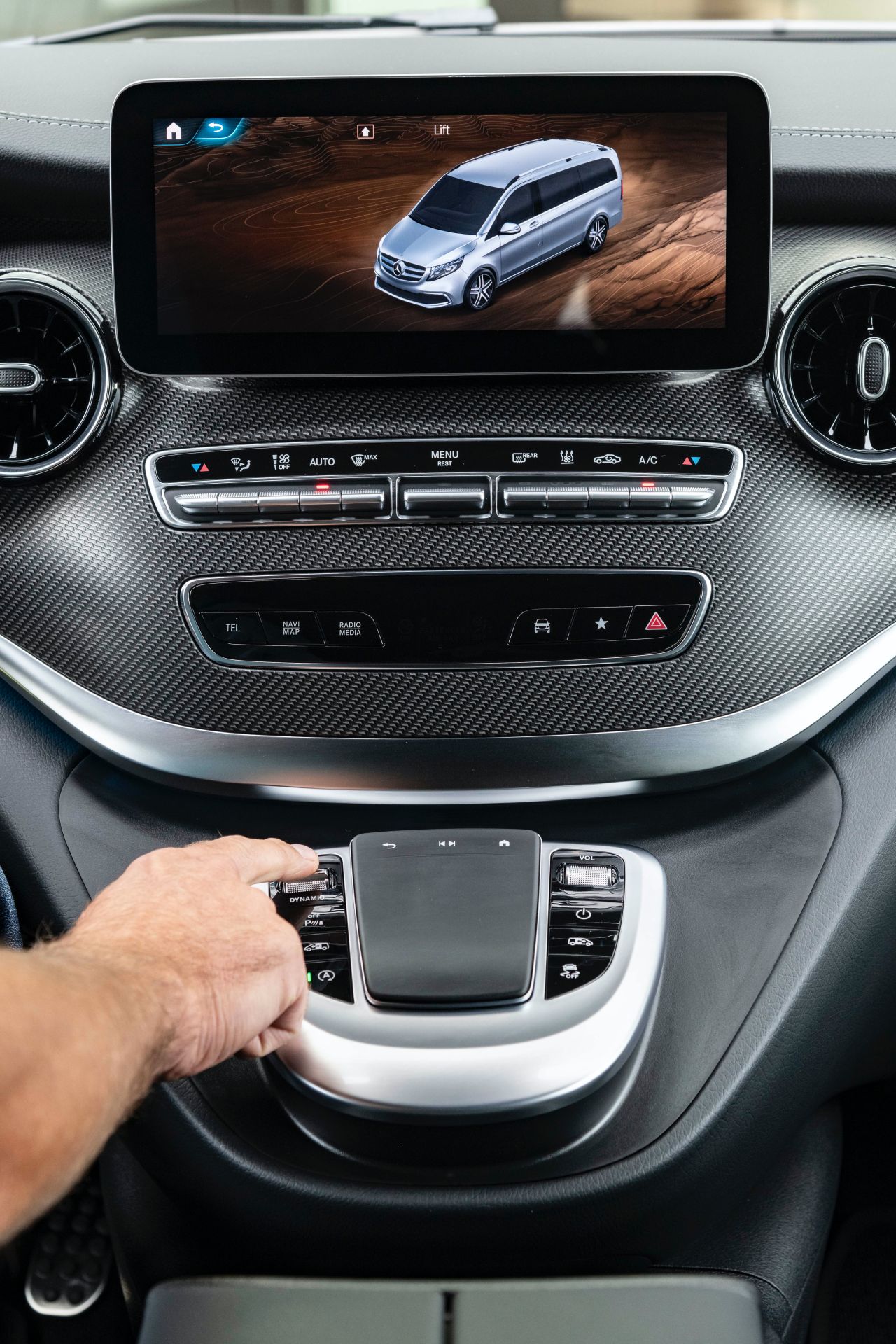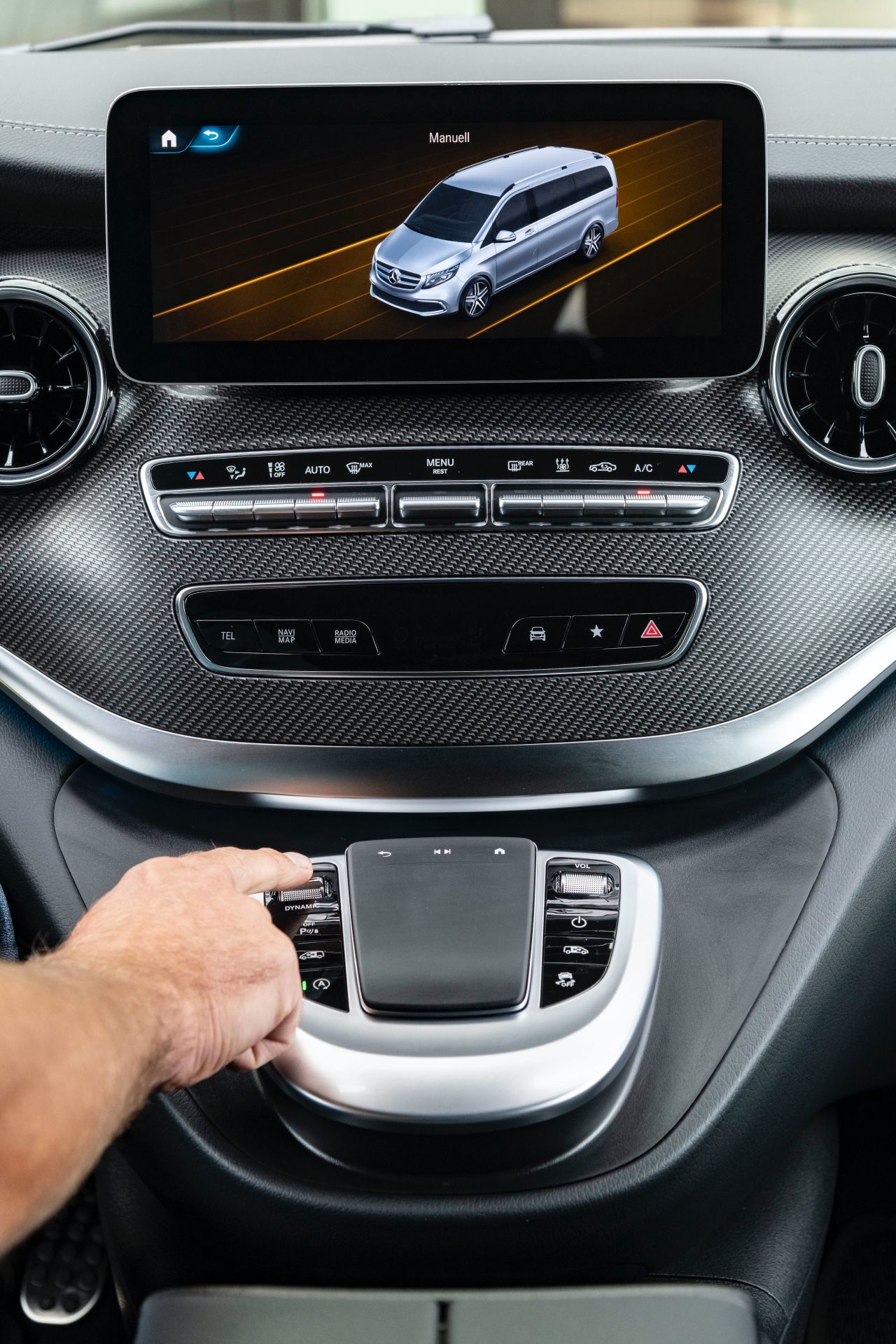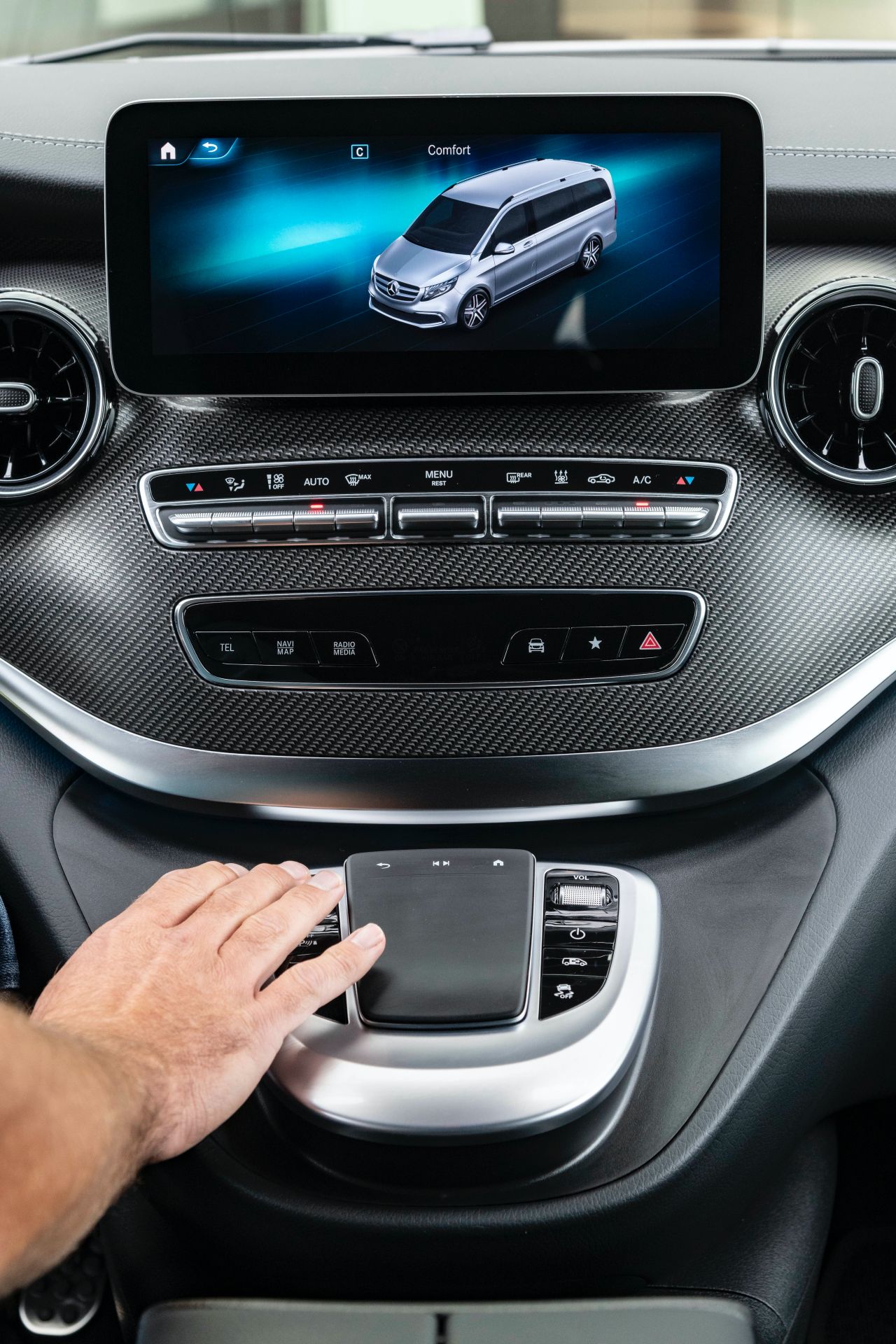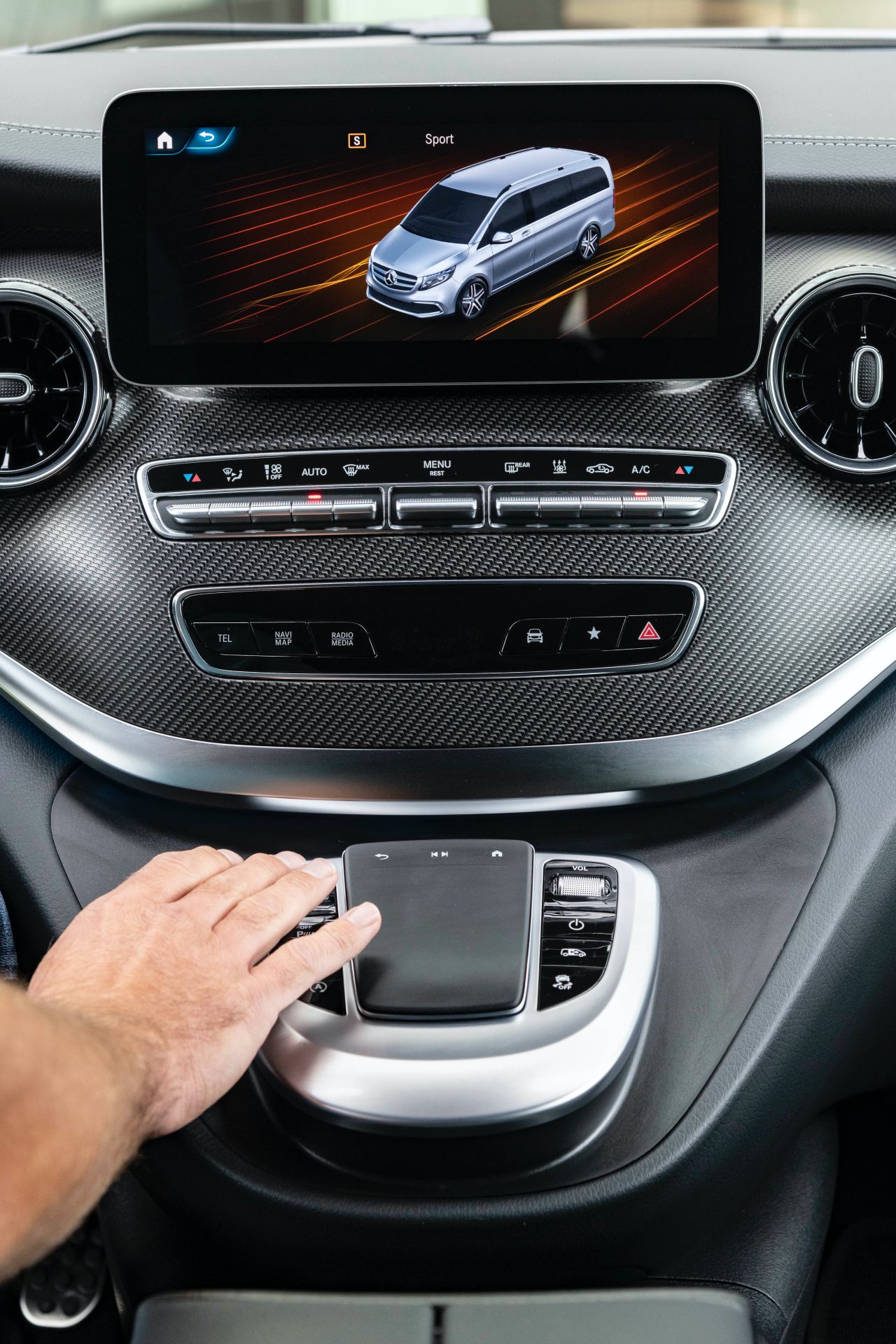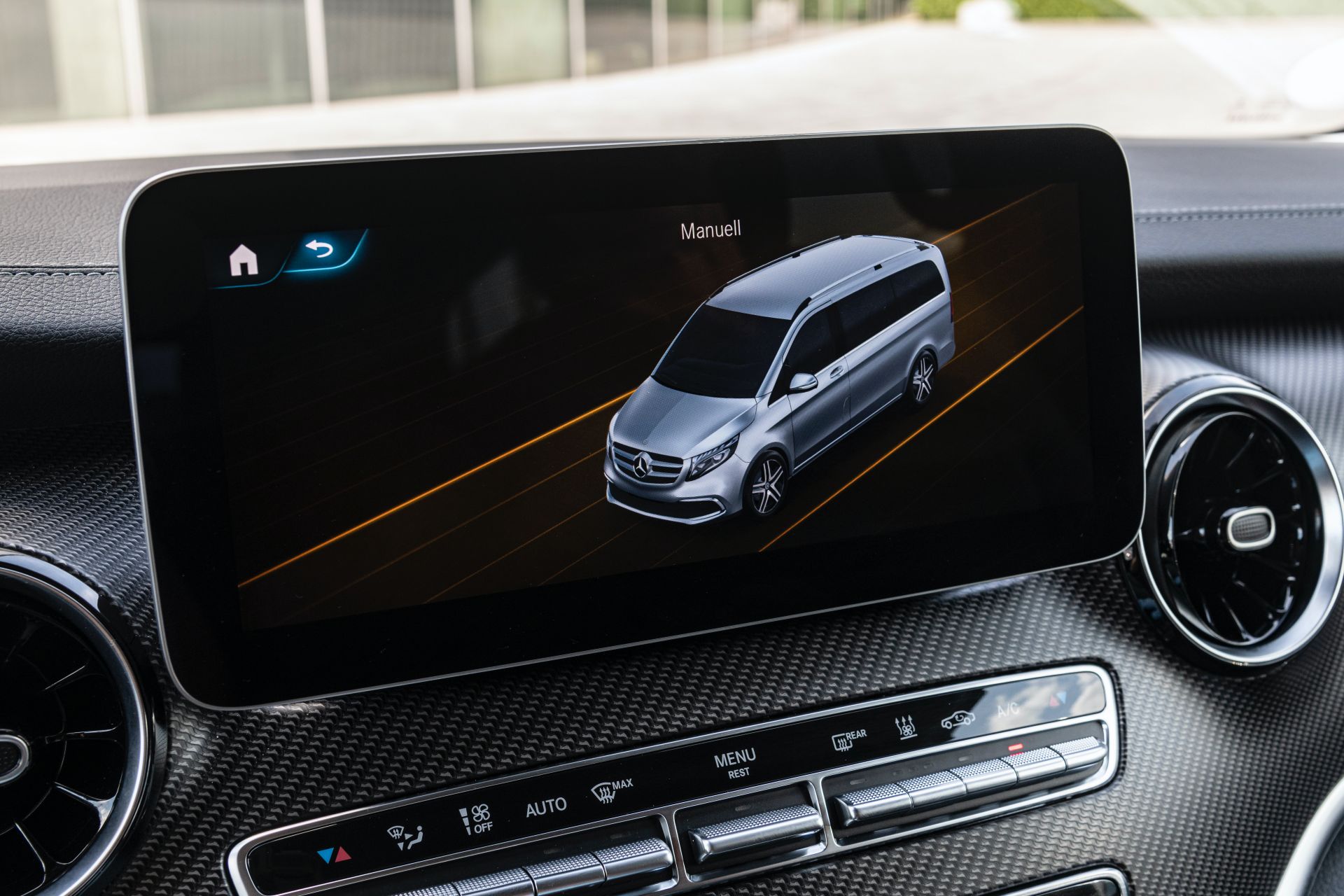Mercedes-Benz has given the V-Class a facelift last year, with revised styling, more safety and assistance systems, as well as a new four-cylinder diesel engine and 9G-Tronic automatic transmission.
Another major update made last year was the adoption of the MBUX multimedia system. Now, the V-Class is getting even more sophisticated with the availability of the Airmatic air suspension system, which Mercedes says is a USP in the segment.
Compared to the regular suspension of the V-Class, Airmatic brings several advantages. The most obvious is the increased driving comfort in all types of terrain, but there are also other benefits. Those include optimized noise levels in the whole vehicle, reduced fuel consumption at high speeds, and personalization via different drive programs.
See Also: Restyled Mercedes V-Class Is More Efficient And Luxurious Than Ever
The Airmatic air suspension adapts the V-Class chassis to a wide variety of road conditions, ensuring constant ground clearance in all types of load status and even on rough terrain. Furthermore, the double, frequency-selective damping control regulates itself independently on each wheel of the V-Class in response to the current state of the road. This improves driving stability and rolling comfort thanks to reduced body movements.
The driver can choose from different drive programs using the Dynamic Select switch in the center console. The “Comfort” and “Manual” programs keep the V-Class at the standard height up to a speed of 110 km/h (68 mph). At higher speeds, the suspension is automatically lowered by 10 mm (0.4 in), something that’s also possible at lower speeds when the “Sport” program is selected. Finally, the “Lift” program lifts the vehicle by up to 35 mm (1.4 in), at speeds of up to 30 km/h (18 mph).
In addition to the V-Class, the Airmatic air suspension system is also available for the EQV all-electric variant, the Vito Tourer, the eVito Tourer, and the complete Marco Polo camper and leisure van family.



